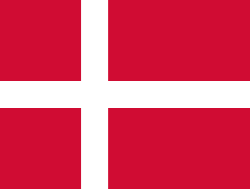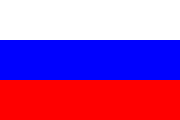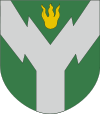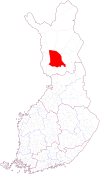Rovaniemi
| Rovaniemi | |||||
|---|---|---|---|---|---|
|
|||||
| City | Rovaniemi (1960) | ||||
| Administrative Province | Province of Lapland | ||||
| Historical Province | Lappland | ||||
| Area - Total - Land - Water |
Ranked 5th (municipalities), and 1st (cities) 8,016 km2 7,601 km2 415 km2 |
||||
| Population - Total (01/2006) - Density |
Ranked 13th 58,500 7.6 / km2 |
||||



Rovaniemi (pronunciation, Inari Sami: Ruávinjargâ, Northern Sami: Roavenjárga and Roavvenjárga, Skolt Sami: Ruäˊvnjargg) is the administrative capital and the centre of commerce of Finland's northernmost Province, Lapland. It is situated close to the Arctic Circle and between the hills of Ounasvaara and Korkalovaara, at the confluence of the Kemijoki River and its tributary, the Ounasjoki River. The city and the surrounding Rovaniemen maalaiskunta (Rural municipality of Rovaniemi) were merged into one on January 1, 2006. The new municipality has an area of 8,016 km2 and an approximate population of 60,000. It is one of the largest cities in the world by area - though much of it is covered by forests.
The word Rovaniemi has often been considered to be of Lappish origin, as "roavve" in Sami denotes a forested ridge or hill or the site of an old forest fire. In the dialects of southern Lapland, however, "rova" means a heap of stones, a rock or a group of rocks in a stretch of rapids, or even a sauna stove.
Contents |
History
There has probably been continuous settlement in the Rovaniemi area since the Stone Age. Periodic clearance of new land for agriculture and the practice of slash-and-burn cultivation began around 750-530 B.C. Artifacts found in the area suggest that an increasing number of travellers from Karelia in the east, Häme in the south and the Arctic Ocean coast in the north must have come there from 500 A.D. onwards. The Sami are considered to be Lapland's own indigenous population.
The exploitation of Lapland's natural resources in the 1800s boosted Rovaniemi's growth. Extensive logging sites and gold fever attracted thousands of people to Lapland. As the mining of natural resources was increased, Rovaniemi became the business centre of the Province of Lapland.
In the Lapland War, during the Second World War, approximately 90% of the total property in the town was destroyed by German troops. The rebuilding of Rovaniemi began in 1946. Several public and private buildings designed by the Finnish architect Alvar Aalto have been erected in the town. One example is the Administrative and Cultural Centre, which comprises the City Hall, the Lappia Hall (housing the City Theatre, Orchestra and Congress Hall), and the Provincial Library.
Rovaniemi today
Because of the unspoilt nature and numerous recreational opportunities, tourism is an important industry in Rovaniemi. The city has a number of hotels and restaurants located both in the centre and on the outskirts of the town.
Since Rovaniemi represents the capital of the Province of Lapland, many government institutions have their offices there. About 10,000 of the inhabitants are students. Rovaniemi is home to not only the University of Lapland but also the Rovaniemi Polytechnic (also known as the Rovaniemi University of Applied Sciences), which comprises institutes of information and traditional technology, business, health and social care, culinary studies, forestry, rural studies and sports. Local newspapers include the Lapin Kansa, Uusi Rovaniemi and ROI-press.
Rovaniemi is the northernmost point of VR's electric railway system, with direct daytime and overnight passenger trains from Rovaniemi station to Oulu, Tampere, Helsinki and Turku. Diesel-powered passenger trains operate north-east of Rovaniemi to Kemijärvi.
Rovaniemi's most prominent landmarks include the Jätkänkynttilä bridge with its eternal flame over the Kemijoki river, the Arktikum House which rises out of the bank of the Ounasjoki river, the Rovaniemi Town Hall, the Lappia House which serves as a theatre, concert hall and congress centre, and the library. The last three mentioned buildings are by the famous Finnish architect Alvar Aalto. Claimed to be the residence of Santa Claus[1][2][3], Santa Claus Village and Santapark, is located 8 km north of the centre. Rovaniemi is also home to the world's most northern branch of McDonald's. The Arktikum is a very comprehensive museum of Finland's Arctic region.
Directly across the river from the town is the Ounasvaara ski center. The top of the Ounasvaara hill bears the site of some of the earliest known human settlements in the area.
A phenomenon also attracting numerous tourists is the Aurora Borealis or Northern Lights. In Finnish Lapland the number of auroral displays can be as high as 200 a year whereas in southern Finland the number is usually fewer than 20.
Twin cities
 Veszprém, Hungary
Veszprém, Hungary Ajka, Hungary
Ajka, Hungary Cadillac, United States
Cadillac, United States Drvar, Bosnia and Herzegovina
Drvar, Bosnia and Herzegovina Frederikshavn, Denmark
Frederikshavn, Denmark Grindavík, Iceland
Grindavík, Iceland Harbin, China
Harbin, China Kassel, Germany
Kassel, Germany Kiruna, Sweden
Kiruna, Sweden Murmansk, Russia
Murmansk, Russia Narvik, Norway
Narvik, Norway Neustrelitz, Germany
Neustrelitz, Germany Olsztyn, Poland
Olsztyn, Poland St. Johann in Tirol, Austria
St. Johann in Tirol, Austria
Facts and Figures
Climate
- average temperature: + 0.2 °C
- annual rainfall: 535 mm/annum
- snow stays on the grounds 183 days a year on average
- lowest temperature ever recorded: –47.5 °C, recorded on January 28, 1999
- highest temperature ever recorded: + 30.6°C
- the midnight sun can be seen from June 6 to July 7
Population
(figures December 31, 2005)
- female: 29,813
- male: 28,022
- Finnish: 57,037
- foreigners: 798
- total: 57,835
Employment
(figures 1999)
- primary production: 1.6 %
- manufacturing in industry: 14.9 %
- private services: 36.8 %
- public services: 44.4 %
- unknown: 2.3 %
Famous inhabitants
- The popular Finnish author Jari Tervo is a native of Rovaniemi and his novels describe the town in an unforgettable manner.
- The important Finnish writer Timo K. Mukka died in Rovaniemi in 1974.
- Snowboarder and 2005 Winter X Games gold medalist Antti Autti is a Rovaniemi native, and in April 2005 he received his own piece of land in the city for being named to the 2006 Finnish Olympic team.
- Alpine skier Tanja Poutiainen is a Rovaniemi native.
- World champion snowcross winner Janne Tapio is a Rovaniemi native.
- Tomi Putaansuu, better known as Mr. Lordi lead singer of the Hard rock band and 2006 Eurovision Song Contest winner Lordi.
- Progressive rock band Absoluuttinen Nollapiste
- Singer Antti Tuisku
- Santa Claus Village in Rovaniemi is said to be the residence of Father Christmas.[1][2][3]
External links and references
- City of Rovaniemi – official website
- Information about Finnish Lapland
- University of Lapland
- Rovaniemi Polytechnic
- Rovaniemi Theatre and Congress Hall Lappia
- Satellite view of Rovaniemi
References
- Rikkinen, K. A Geography of Finland. Lahti: University of Helsinki (1992)
- Rovaniemi: Arctic Circle - Finland. Helsinki: Oy Sevenprint Ltd (1998)

